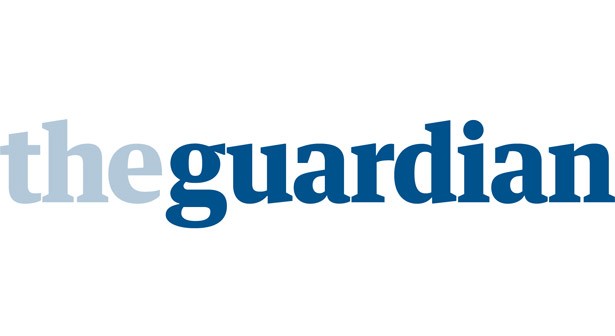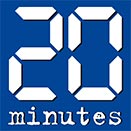Barack Obama walked solemnly down a long hallway of cells, marked with plain white numerals over grey cement doors, taking in the barren surroundings of a two-story section known as Cell Block B that houses prisoners as part of a drug rehabilitation and prevention program.
The inmates had been temporarily moved so Obama, the first sitting US president to visit a federal prison, could get a glimpse of life inside the medium-security, all-male facility in central Oklahoma.
The cells were nearly identical: twin-sized mattresses on two single bunks, a shared bedside table that typically contained a handful of books, two blue plastic chairs stacked next to narrow, white steel cabinets, a toilet with no seat and a sink with a small mirror and an even smaller shelf.
Obama had just spent 45 minutes in a round-table setting with six of the inmates who inhabit such cells – all nonviolent drug offenders. His administration is pushing a sweeping overhaul of the nation’s criminal justice system. The visit, he told reporters following his tour, would hopefully “highlight both the challenges and opportunities that we face” in ensuring that the system is not only fair, but also both preventative and effective.
Obama toured the facility with Charles Samuels, director of the Bureau of Prisons, and correctional officer Ronald Warlick. While he praised the prison as “an outstanding institution within the system, Obama added there were “enormous overcrowding issues”, referencing the cell he had glanced inside.
“Three, whole-grown men in a 9ft by 10ft cell – there’s been some improvement, now we have two, but overcrowding like that is something that has to be addressed,” Obama said.
Hailing El Reno – which has roughly 1,300 inmates – for its emphasis on education, job training and drug counseling, Obama underscored the need to grant nonviolent offenders a second chance.
Reflecting on his meeting with the inmates – some of them serving “very long sentences” – Obama said he was struck by how their lives might have been different had they been born with the structural and societal support the average citizen takes for granted.
“When they described their youth and their childhood, these are young people who made mistakes that aren’t that different than the mistakes I made and the mistakes a lot of you guys made,” Obama said.
“The difference is they did not have the kind of support structures, the second chances, the resources that would allow them to survive those mistakes.”
“So many young people end up in our criminal justice system – it’s not normal. It’s not what happens in other countries. What is normal is teenagers doing stupid things, what is normal is young people making mistakes, and we’ve got to be able to distinguish between dangerous individuals who need to be incapacitated and incarcerated versus young people who are in an environment in which they are adapting, but given different opportunities and a different vision of life could be thriving the way we are.
“That’s what strikes me,” he concluded, somberly. “There but for the grace of God.”
Above Obama as he spoke, a slim wall separating the two floors was adorned with bold words painted in green and yellow. They began grimly – with “discontinuity” and “indolence” – but concluded in a more hopeful vein, with “optimism” and “integrity”.
Obama cites ‘justice and redemption’ in call for comprehensive prison reform
The president spent much of the week spotlighting the disproportionate policing, prosecution and detention of minorities – beginning with an announcement on Monday that he was commuting the sentences of 46 federal prisoners who had been jailed for nonviolent drug offenses. The move brought Obama’s total number of commutations to 89, the most in a single day since President Lyndon B Johnson.
The issue of criminal justice in America has gained a new sense of urgency over the last year, particularly amid a series of high-profile killings of unarmed black men at the hands of police – bringing the nation to a crossroads with shadows of the 1960s civil rights movement.
Obama laid out a comprehensive approach to reforming a system that is stacked against black and Hispanic communities in particular – most of which would require Congress to take action – during an impassioned speech on Tuesday before the National Association for the Advancement of Colored People, the oldest and largest civil rights organization in the US.
Addressing the group in Philadelphia, the president spoke bluntly of a deep-rooted discrimination against minorities that he said ranged from the justice system to everyday life, dubbing it “a crisis” that can no longer be ignored.
“The bottom line is that in too many places, black boys and black men, Latino boys and Latino men experience being treated differently under the law,” Obama said, citing statistics showing that 60% of the nation’s inmates are black and Hispanic even though both demographics make up just 30% of the population.
“By just about every measure, the life chances for black and Hispanic youth still lag far behind those of their white peers,” he said. “Our kids, America’s children, so often are isolated, without hope, less likely to graduate from high school, less likely to earn a college degree, less likely to be employed, less likely to have health insurance, less likely to own a home.”
The president called for lowering – if not ending – mandatory minimum sentences for nonviolent drug offenses, restoring the voting rights of ex-felons, revisiting hiring practices that require applicants to list criminal activity, and expanding job training programs so inmates are better prepared to reintegrate into society.
Easing mandatory minimums has gained particular steam on Capitol Hill, bringing together the unlikeliest of bedfellows – from Tea Party conservatives to liberal firebrands – and leaving the Obama administration optimistic that at least some legislative victories are within reach.
Obama’s aggressive efforts to fix the criminal justice system are also the latest reflection that he wishes to give a new meaning to being lame-duck president, viewing his final two years in office not as with little choice but to watch from the sidelines – but instead to cement his legacy with the culmination of the “hope and change” he famously campaigned on in 2008.
“There’s a certain freedom with where the president is. He knows he’s never going to have to be on a ballot again,” Michele Jawando, the vice-president for legal process at the Center for American Progress, told the Guardian.
“When you think about where do you want to have significant impact both culturally and symbolically … the system that he is in charge of has perpetrated years of systematic bias and discrimination on the poor and people of color, and he recognizes he has an opportunity, however fleeting, to capture this movement and move forward.”
For much of the first six years of his presidency, Obama waded more cautiously in to racial politics. He often found himself acknowledging an issue that resonated with him personally, while grappling with the soaring expectations of being the nation’s first black president.
“I think that has been a very real part of the presidency,” Jawando said. “He has had to consistently deal with challenges – on one side unique obstacles because he was the first African American president, and on the other challenges that only he would have to ever embrace or speak to because he was the first African American president.”
But the death of Trayvon Martin, an unarmed Florida teenager who was shot and killed in 2012 by a neighborhood watchman, George Zimmerman, marked a turning point. As the details unfolded – Zimmerman trailed Martin, suspicious of the black teen sporting a hoodie, provoking an altercation that left the 17-year-old dead – public outcry spread across the nation.
The Obama administration maintained the caution it routinely applies to ongoing criminal investigations. That was until the president was asked about the incident directly, prompting a response that within a few short words spoke volumes.
“If I had a son, he’d look like Trayvon,” Obama said. “When I think about this boy, I think about my own kids.”
He expanded upon those comments in summer 2013, after a jury acquitted Zimmerman of murder charges, sparking nationwide protests. After a week of silence, Obama emerged in the White House briefing room to offer the most extensive remarks on race of his presidency to date. He reflected personally on what it was like to be a black man in America – from the woman who clutched her purse in your presence to the sound of people locking their car doors as you walked by.
The speech marked a rare opening into the thinking of a president who shared the frustration felt by communities of color across America – because he had lived it. And as he alluded to in his visit to the prison on Thusrday, Obama empathized with the inmates he met — because he could have been them.
In his second term, Obama began a piecemeal approach to boosting minority youth – launching My Brother’s Keeper in February 2014 as a signature initiative designed to help at-risk black youths and invest in their educational opportunity and potential. Under the program, the White House teamed up with both non-profits and private companies to address gaps in education, employment and criminal justice.
In contrast, however, to his repeated advocacy for other items on his agenda – such as immigration reform, climate change and LGBT rights – some civil rights advocates have argued that Obama’s focus on criminal justice reform is long overdue.
Texas representative Sheila Jackson Lee, a Democrat and member of the Congressional Black Caucus, said it was not for a lack of wanting on Obama’s part to be engaged. The president, she said, has simply had to contend with a series of crises – ranging from those manufactured by Congress to the threat of terrorism abroad – and channeled many of his criminal justice proposals through former attorney general Eric Holder.
“Leading a nation is very difficult. You can have an agenda that gets distracted for the reason that you have to respond to crises in this country and on the world stage,” Jackson Lee said, pointing to Obama’s signing of the 2010 Fair Sentencing Act, which reduced the penalties for crack cocaine offenses, as evidence that criminal justice has been an important piece of the president’s agenda since his early days in office.
But the systemic barriers against minorities were thrust into the spotlight again last summer, forcing the issue of criminal justice back to the forefront of Obama’s agenda.
Two unarmed black men – Michael Brown in Ferguson, Missouri and Eric Garner in New York City – died at the hands of police.
Protesters of all stripes took the streets across major US cities and in Ferguson, images and videos of a militarized police force clashing with demonstrators were broadcast throughout the world.
The moment captured not only the outrage over the killings, but long-simmering tensions between law enforcement and the racial minorities they disproportionately target.
Even then, Obama navigated the unrest with his signature pragmatism. He condemned the small faction of protesters who engaged in looting and arson and called for peaceful demonstrations, while acknowledging the factors that created mistrust between police officers and communities of color.
The president also requested $263m in funding for body cameras for police and better training – policies that have begun to gain traction at the state level, but where local law enforcement say they lack sufficient resources.
The subsequent national attention on inherent racial bias – aided by increased awareness, with many incidents being caught on camera – in many ways opened the pathway for Obama to litigate his case on criminal justice before the court of public opinion. The climate has, at the very least, ensured that US lawmakers can no longer turn a blind eye to the correlation between an inequitable justice system and the deterioration of race relations.
And it has enabled an ever-emboldened Obama to maintain pressure on Congress to send legislation to his desk that addresses not just the consequences of an unjust system, but also its causes.
That encompasses investments in early education – the president has pushed for universal pre-kindergarten – an end to mass incarceration and a chance at redemption. Alternatives to prison, such as drug courts and treatment and probation programs, should also be considered, Obama said.
‘An injustice system’
The number of people behind bars in America has quadrupled since 1980, he told reporters following his tour of the prison on Thursday. American taxpayers, Obama added, are left to pick up the tab of roughly $80bn a year.
“A primary driver of this mass incarceration phenomenon is our drug laws – our mandatory minimum sentencing around drug laws,” Obama said. “And we have to consider whether this is the smartest way for us to both control crime and rehabilitate individuals.”
The president also reiterated his hope that Republicans who have expressed interest in criminal justice will come through. A bill to lower some mandatory minimums, as well as legislation that would allow lower-risk prisoners to enroll in recidivism-reduction programs and earn an earlier release, have Democratic and Republican co-sponsors in the Senate. Jackson Lee said she was preparing to introduce bills in the House of Representatives to establish a rehabilitation process for juveniles behind bars and protect them from practices like solitary confinement, among other legislation designed to improve police-community relationships.
John Boehner, the Republican House speaker, also surprised many by endorsing a bill to reduce mandatory minimums on Thursday — a major boost to criminal justice advocates.
“We’ve got a lot of people in prison, frankly, that don’t really in my view need to be there,” Boehner told reporters on Capitol Hill. “It’s expensive to house. Some of these people are in there for what I’ll call flimsy reasons.”
The issue has also entered the 2016 presidential contest, with Republican candidate Rand Paul often speaking on the campaign trail about the need to restore voting rights for nonviolent ex-felons and criticizing the disproportionate number of minorities in US prisons.
Hillary Clinton, the Democratic frontrunner, has routinely broached the subject. She dedicated the first major speech of her campaign to criminal justice after riots erupted in Baltimore in May over another police killing of an unarmed black man. Her husband, former President Bill Clinton, has acknowledged the so-called “tough on crime” laws he signed in the 1990s caused the prison population in America to skyrocket and made mass incarceration worse.
While it early yet to say if the wide-ranging support will translate into the transformation Obama seeks, the president has laid down his marker – issuing a moral call to action in his remarks before the NAACP.
“Any system that allows us to turn a blind eye to hopelessness and despair, that’s not a justice system, it is an injustice system,” he said.
“Justice is giving every child a shot at a great education no matter what Zip code they’re born into. Justice is giving everyone willing to work hard the chance at a good job with good wages, no matter what their name is, what their skin color is, where they live.”





